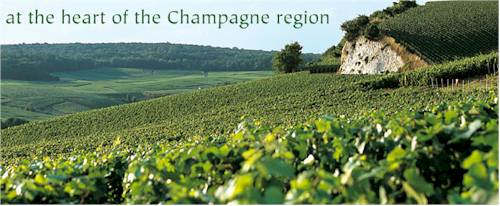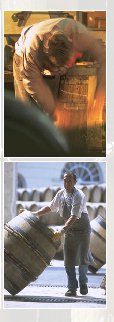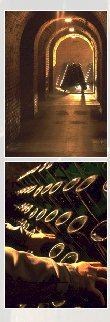


The original winemakers -Hennequins- were landowners in Cramant as of 1585 in Cuis and Ay. In 1829, Athanase Hennequin de Villermont became partners with Paul Renaudin and Jacques Bollinger to found the Maison Bollinger in Ay.

Bollinger, unlike it's thriving market oriented competitive Champagne Houses, has continued to produce rich, full-flavored wines that reflects tradition.
Bollinger owns one of the very few vineyards -Clos St. Jacques - to escape the vine disease that destroyed Europe's wineries in the 1800's. A secial release of this wine as the 100 percent pinot noir champagne called Vieilles Vignes Fran?aises, is unique in that it can boast that it's grown on ancient French rootstock.
Before being a great Champagne, Bollinger is a great wine and the quality of the grapes is a determining factor.

The Bollinger winery enjoys miles of underground cellars which are an integral part of the authentic Champagne making process.
The House's vineyard of 160 hectares, particularly well spread out, enables the winemakers to cover more than 60% of Bollinger's needs; an exceptional situation in Champagne. The remainder is supplied by associated winegrowers. This grape supply ensures the continuity and the consistency of the Bollinger style.
Madame Jacques Bollinger, who was familiarlycalled 'Aunt Lilly', took over the reins in 1941, following her husband's death. She succeeded in giving the firm new impetus whilst maintaining extremely strict rules regarding the quality.
Pinot Noir is the basis of the blend and contributes vinosity, complexity and strength. Bollinger favours Grands and Premiers Crus. Chardonnay adds a touch of elegance and refinement. Meunier imparts freshness and lightness.






















